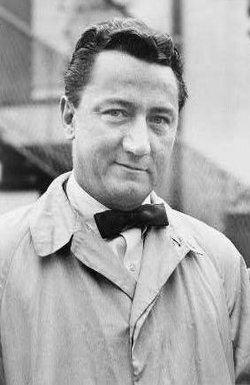David Halberstam was born in New York City on April 10, 1934. HIs father was a surgeon in the US Arm so the family moved a great deal during World War II until they settled in Yonkers, New York in the 1950s. Halberts attended Harvard University where he became the managing editor of the student-run newspaper The Harvard Crimson until he graduated in 1955. Upon graduating Harvard with a degree in journalism, Halberstam took at job at the Daily Times Leader of West Point, Mississippi as he wanted to be in the South to cover the civil rights struggle. He eventually moved to Nashville to write for their large daily newspaper The Tennessean.
 In 1960 Halberstam joined the Washington bureau of the New York Times where he covered the inauguration of President John F. Kennedy. Later that year he published his first book, The Noblest Roman, a “novel of political skullduggery” in the Deep South. The Times soon sent him out as a war correspondent to cover the independence struggle raging in the Congo.
In 1960 Halberstam joined the Washington bureau of the New York Times where he covered the inauguration of President John F. Kennedy. Later that year he published his first book, The Noblest Roman, a “novel of political skullduggery” in the Deep South. The Times soon sent him out as a war correspondent to cover the independence struggle raging in the Congo.
In September 1962, the Times reassigned Halberstam to its Saigon bureau to cover the escalating conflict in Vietnam. The official Pentagon and State Department statements declared that the U.S. and its South Vietnamese allies were winning a war against a ragged band of Communist rebels. However, Halberstam found another story when he followed the troops into the field. The insurgents, backed by the Communist government in the North, enjoyed widespread support in rural Vietnam, where the U.S-backed Saigon government was deeply unpopular. His reports were denounced by Kennedy’s supporters as dishonest, if not disloyal, but Halberstam continued to report the story as he saw it. In 1963, he received the prestigious George Polk Award for his reporting from Vietnam, and at age 30 he was awarded the 1964 Pulitzer Prize for International Reporting. The following year he published The Making of a Quagmire: America and Vietnam During the Kennedy Era.
During his travels, Halberstam was staying in Warsaw, Poland, where he met and then married Elzbieta Czyzewska, a Polish actress. They stayed in Poland for a few years to allow Elzbieta to continue her career, but Halberstam’s criticism of Poland's communist dictatorship caused the government to expel the couple from the country in 1967. The pair made a new home in New York City, where she resumed her career. They divorced in 1977. Halberstam married Jean Sandness Butler in 1979.
After the assassinations of both John and Robert Kennedy, Halberstam continued to write a number of books about the Vietnam War and Washington politics. Halberstam's reputation as a major historian was firmly established with his best-seller The Best and the Brightest (1972), in which he traced the path by which a gifted and promising team of political and military experts had led the nation into the greatest foreign policy disaster in its history. The book was a number one best-seller and has had a pervasive influence on many Americans' thinking about foreign policy for over a generation.
Halberstam next turned his attention to the growing concentration of influence in the hands of a few very large media corporations in his 1979 book, The Powers That Be.
In the 1980s he switched gears and turned to sports, a personal passion. He traveled with the Portland Trail Blazers professional basketball team in the 1979 season and wrote a book about this experience. Over the next two decades, a number of Halberstam's books evoked the drama of professional sports to mirror larger movements in American society. He wrote more than 20 books throughout his career and was a reporter until the end.
Halberstam died on April 23, 2007 at the age of 73 in a car accident in Menlo Park. He was in town chasing a story - he was headed to an interview football player Y.A. Tittle for a book about the 1958 NFL championship game between the New York Giants and the Baltimore Colts, often called football's greatest game. The car Mr. Halberstam was a passenger was in was broadsided by another car while making a turn onto Willow Road. Halberstam was pronounced dead on the scene. The car was driven by Kevin Jones, a UC Berkeley grad student who was a journalism student and had volunteered to drive Mr. Halberstam. Jones pled no contest to a misdemeanor vehicular manslaughter charge and was sentenced to 5 days in jail, with a recommendation that the time be served in the San Mateo County Sherriff’s Office work program rather than behind bars, and was ordered to complete 200 hours of community service, 2 years of probation, and had his license temporarily revoked. The book that Halberstam was writing was completed after his death by Frank Gifford, a player on the losing 1958 Giants team and was titled The Glory Game.



